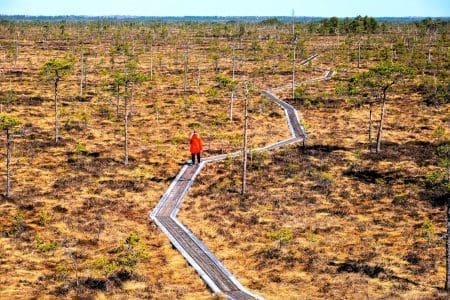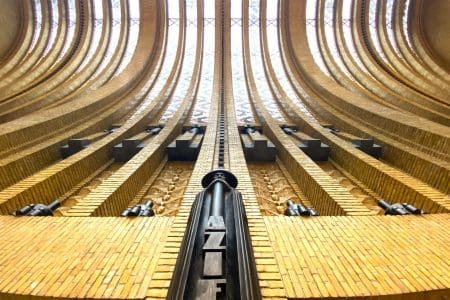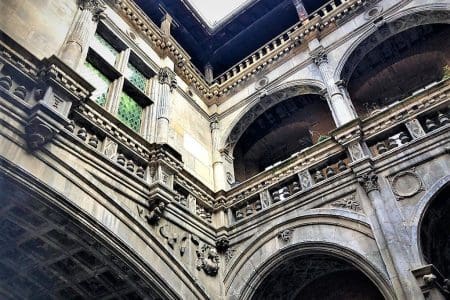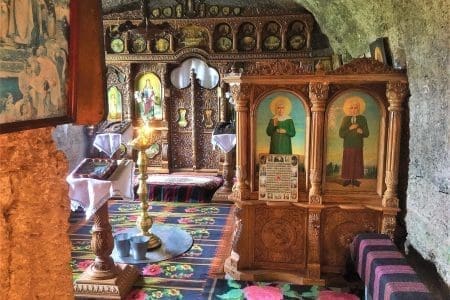Mark Bibby Jackson visits Stuttgart and discovers a green city far removed from its industrial reputation and a visionary architectural exhibition.
If Rome is known for its seven hills, then Stuttgart could easily give the Italian capital a run for its money. I am not quite sure how many hills there are in the German city, but one thing is for certain, Stuttgart is not flat.
An abundance of hills is not the only thing the capital of Baden-Württemberg has in common with Rome, it also has extensive vineyards dotted around the city.
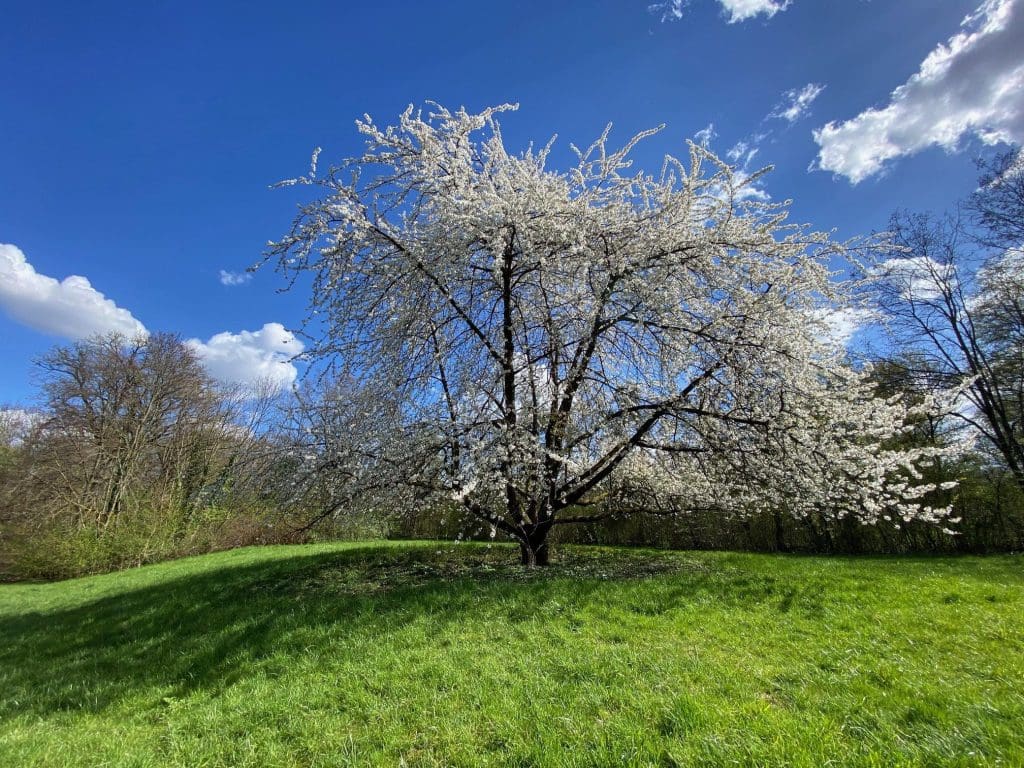
Wine Growing in Stuttgart and the Taj Mahal
Indeed, I am informed that it was the Romans who started wine production here in 50AD. The Stuttgart Museum of Viniculture tells the 2,000-year story of wine growing in the region. However, instead of visiting it we head up one of the many hills in our e-bus to taste the real thing.
Our host Thomas Diehl is the third generation of the family to own the vineyard Diehl. He greets us with a very presentable pinot noir sparkling rosé wine, which he serves with the most amazing bread produced by local artisan bakers. The combination is excellent, especially as we drink in the view across the vineyard to Stuttgart nestling in its cradle below.
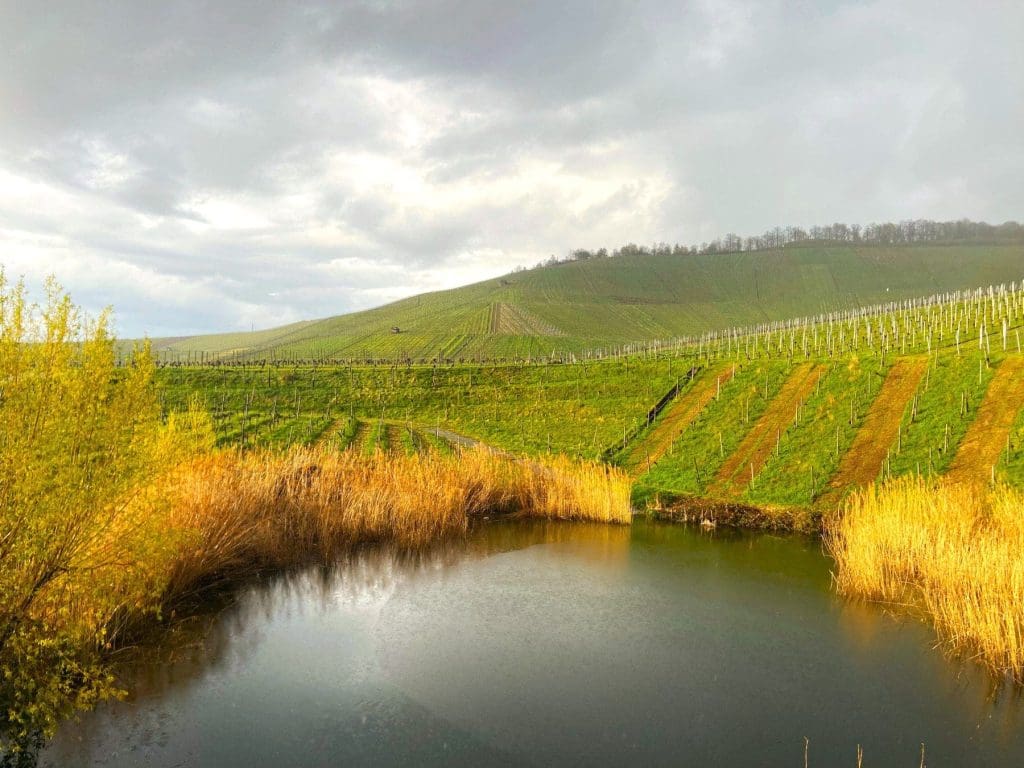
Thomas is very much the young breed of wine owners. He has developed an open-air escape room – surely an oxymoron – at his vineyard which he co-owns with his parents, as well as tasting tours such as ours. A short wine hike leads us back to the tasting room where we try a merlot, which is good but not as glorious as the rosé, before bidding adieu to the young winemaker.
We dine at Rotenberger Weingärtle where we taste some local Swabian cuisine, stopping en route at Stuttgart’s Taj Mahal. This is not an Indian restaurant, but a burial chapel built on the Rotenberg hill by King Wilhelm I of Württemberg as a mausoleum for his second wife Catherine Pavlovna. This striking building, based on the Andrea Palladio’s Villa Rotonda near Vicenza, served as a Russian Orthodox church from 1825 to 1899 and still holds occasional services.
Le Corbusier: Weissenhof Estate
Although Stuttgart is a remarkably green city, especially considering its industrial reputation – the home of Mercedes-Benz, or perhaps more rightly Daimler – it is to a housing estate that we travel the following morning, after an excellent night’s sleep in our wonderful Waldhotel Stuttgart, which is set in a green stretch of hill on the outskirts of the city.
The UNESCO World Heritage Weissenhof Estate was constructed in 1927 as part of an architectural exhibition funded by the Werkbund. The concept was to show how functional and affordable accommodation could be built in cities. The chosen architects were interested in improving urban living conditions.
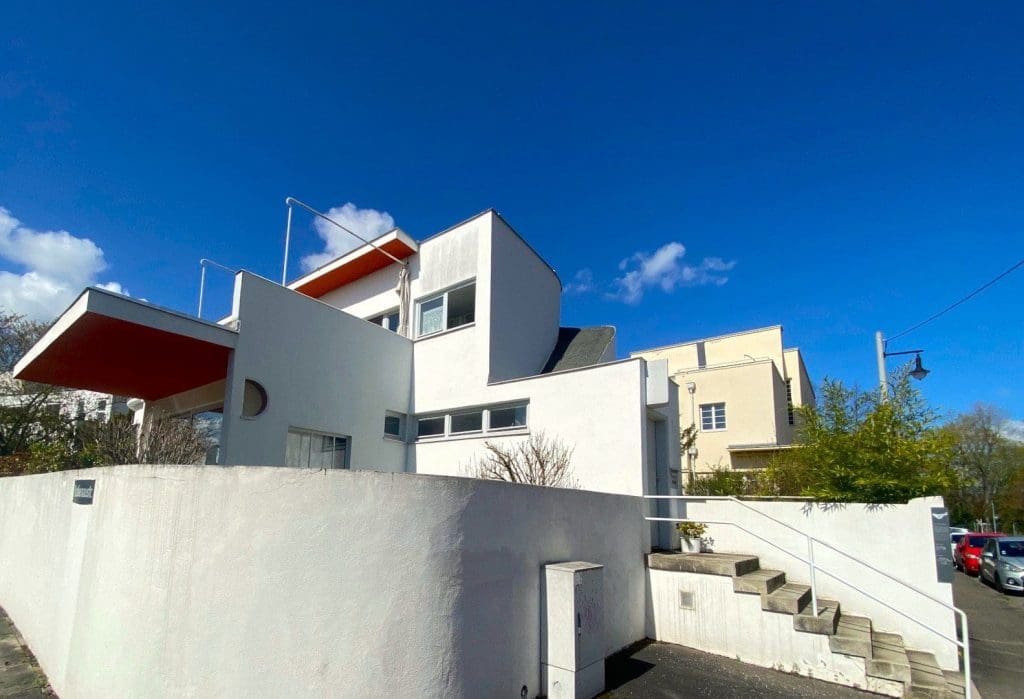
As such it was very much following in the footsteps of the Garden City Movement I had experienced the previous year at Marga Garden City in the town of Senftenberg Brandenburg, as well as the principles of Bauhaus.
Walter Gropius, the founder of the Bauhaus movement, was one of the 17 architects who were invited to design properties at Weissenhof by organiser Ludwig Mies Van see Rohe. Another was Le Corbusier.
Although 10 of the buildings have been destroyed, more than 20, including Le Corbusier’s work, remain. In 2006 Le Corbusier’s semi-detached buildings, which he co-designed with Pierre Jeanneret, were turned into a museum.
It is here we start our tour, before continuing to the adjoining semi, where we can see the principle of the French architect’s ‘transformable dwelling’ design. Le Corbusier’s design was based on a train with beds folding out from the walls, and sliding partitions separating the rooms (or carriages). For me perhaps the most striking aspect is the bathroom with its own claw foot bath – something which was way ahead of its time, for the working classes at least.
We continue outside to the second Le Corbusier, which he called a Citroen, perhaps a poke at Daimler. For Le Corbusier both train and car reflected a sense of movement that seems appropriate to the overall purpose of the exhibition, to present various ideas on the direction modern architecture should take.
The museum is expecting half a million people to arrive for its 100th anniversary in 2027, which will represent an enormous organisational challenge. I would recommend you visit before the centenary to see this remarkable vision of an affordable future that still seems relevant almost a century on.
Heavens Kitchen
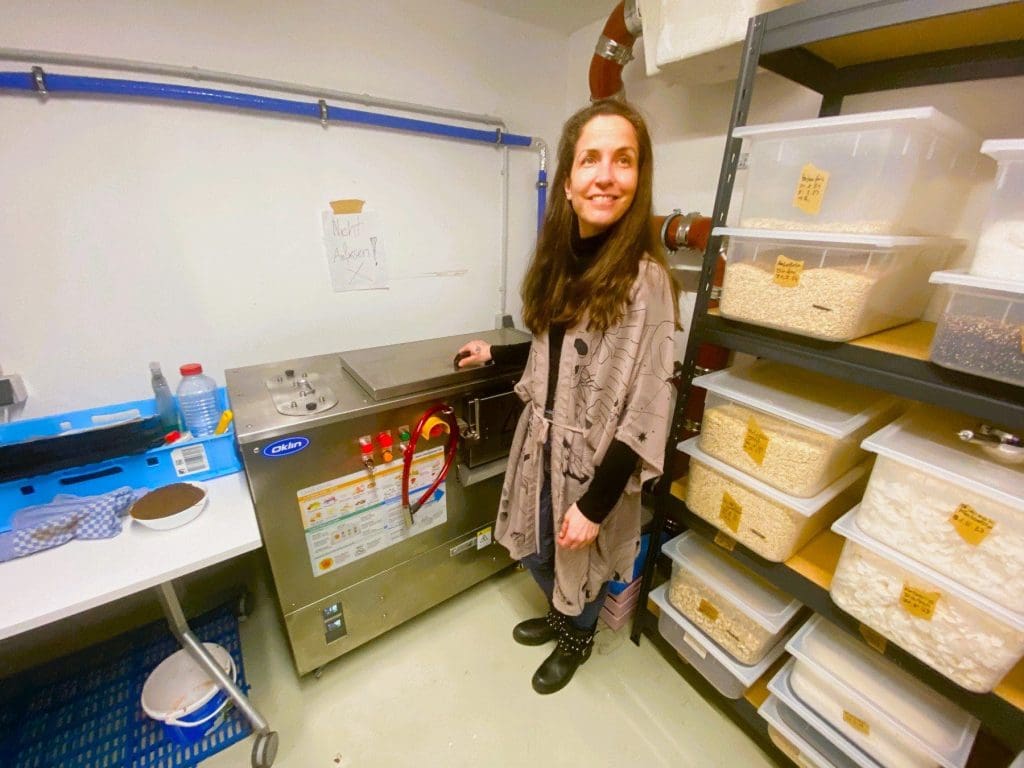
Equally visionary, although very much contemporary, is Heaven’s Kitchen, where we have lunch. This zero waste, vegan kitchen won the German gastro founder prize – the country’s most prestigious award for start-up restaurants – in 2023.
I was fortunate enough to dine at Frea, Berlin’s excellent zero waste restaurant the previous year, and Heaven’s Kitchen which was opened by Tanya Goldstein in 2022, follows similar principles. It even has the same compost machine hidden down by the toilets in the basement.
Tanya informs us that in addition to eliminating waste, the restaurant uses local suppliers and organic products where possible, although she admits that this can be challenging.
The design has a distinctly industrial feel to it, with exposed pipes very much in vogue. The furniture is made of recycled wood from an 18th century Bulgarian house, sourced via a Dutch company. Although Tanya likes to have living plants in the restaurant, the flowers on the table are plastic as she doesn’t want to cut fresh flowers.
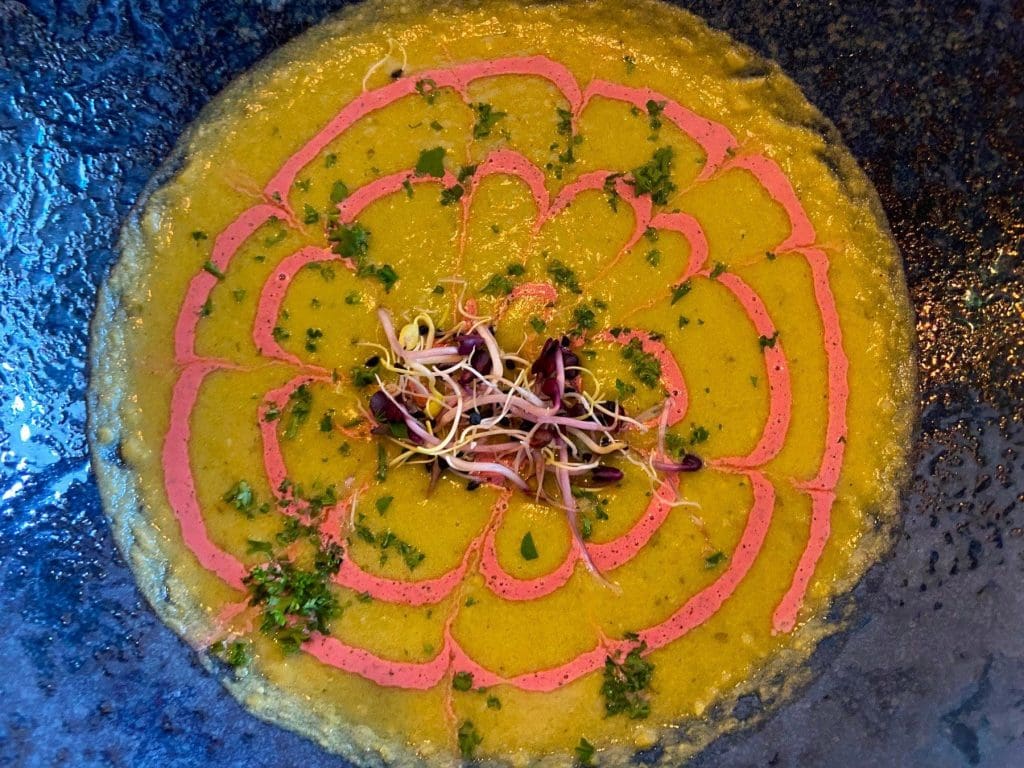
The food is vegan – apart from the milk in the cappuccino which is cow’s milk – and excellent. I start with a pea soup before taking an artichoke risotto. However, the best dish was a tiramisu made with cashew nut milk that was incredible. This alone was worth travelling to Stuttgart – honestly you will never want cow’s milk again.
Urban Hiking in Stuttgart
Another of the attractions of Stuttgart is its public transport system – although the main railway station is undergoing a massive renovation, which should see a marked improvement when completed.
It appears the city has every conceivable transport option, including a funicular – the Standseilbahn Stuttgart cable car –, built in 1929 that was the first fully automatic cable car in the world.
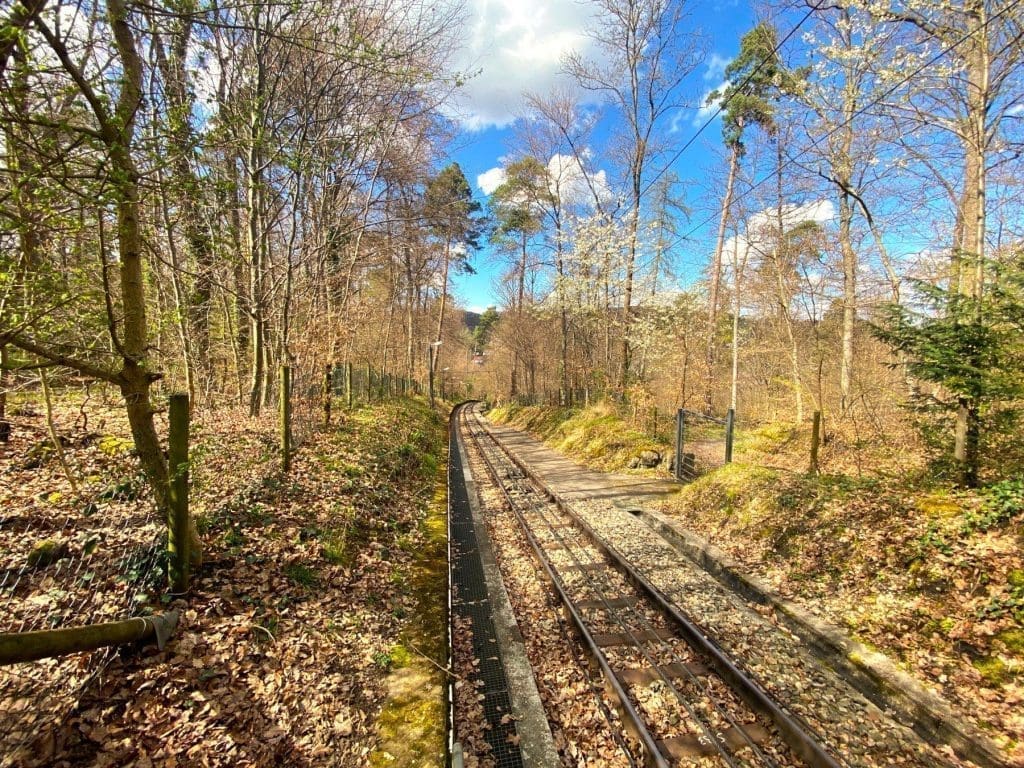
The cable car runs from Südheimer Platz valley station to the Stuttgart Degerloch forest cemetery. It was built to make the 90-metre climb easier for visitors. From the cemetery you can walk along the Blaustrümpflerweg, a 7.5-kilometre-long circular route to the south of the city.
Literally meaning the Bluestocking Trail, it is marked by a series of blue socks. The original blue socks were worn by Catholics who refused to convert to Catholicism under Charlemagne and wore them as a sign of defiance, according to our guide. Apparently, they have nothing to do with the female literary movement in the UK, or American baseball teams.
The trail which affords wonderful views across Stuttgart, eventually leads us to the Zacke, one of the last four rack railways in Germany, which takes us back to Marienplatz, one of the cooler parts of Stuttgart.
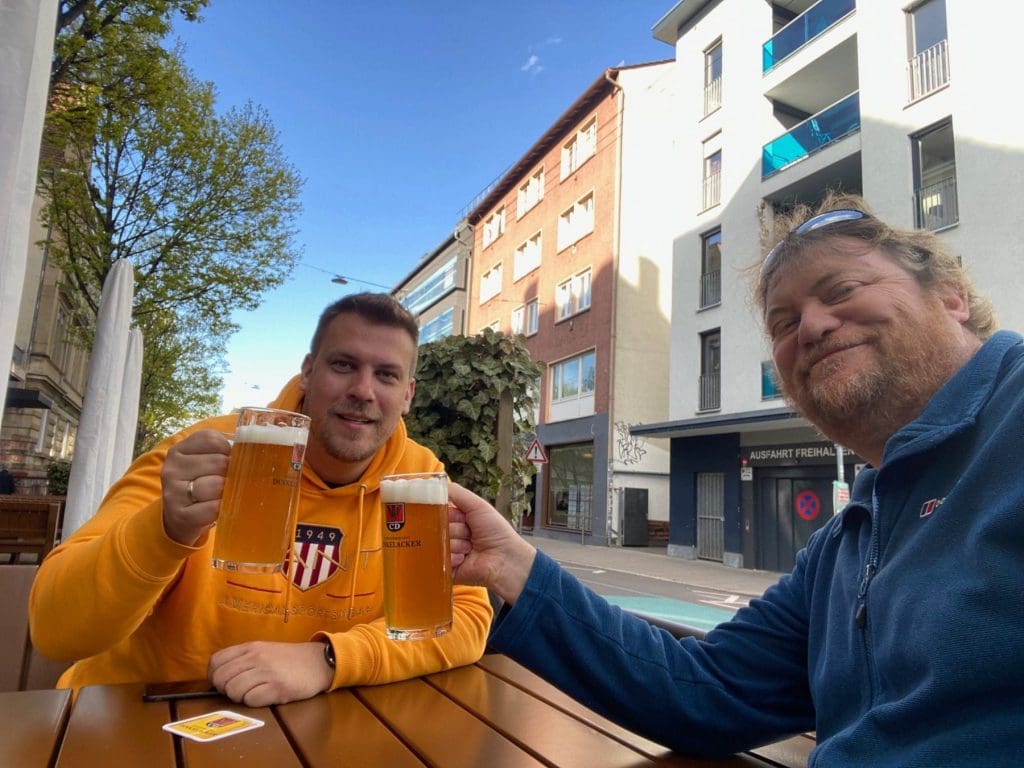
Such exertion built up a thirst, so we stop for a beer at the Dinkelacker brewery, before dining at the organic restaurant Lässig, a very satisfactory and healthy conclusion to our visit to a surprisingly hilly and green Stuttgart.
Stuttgart Hotels
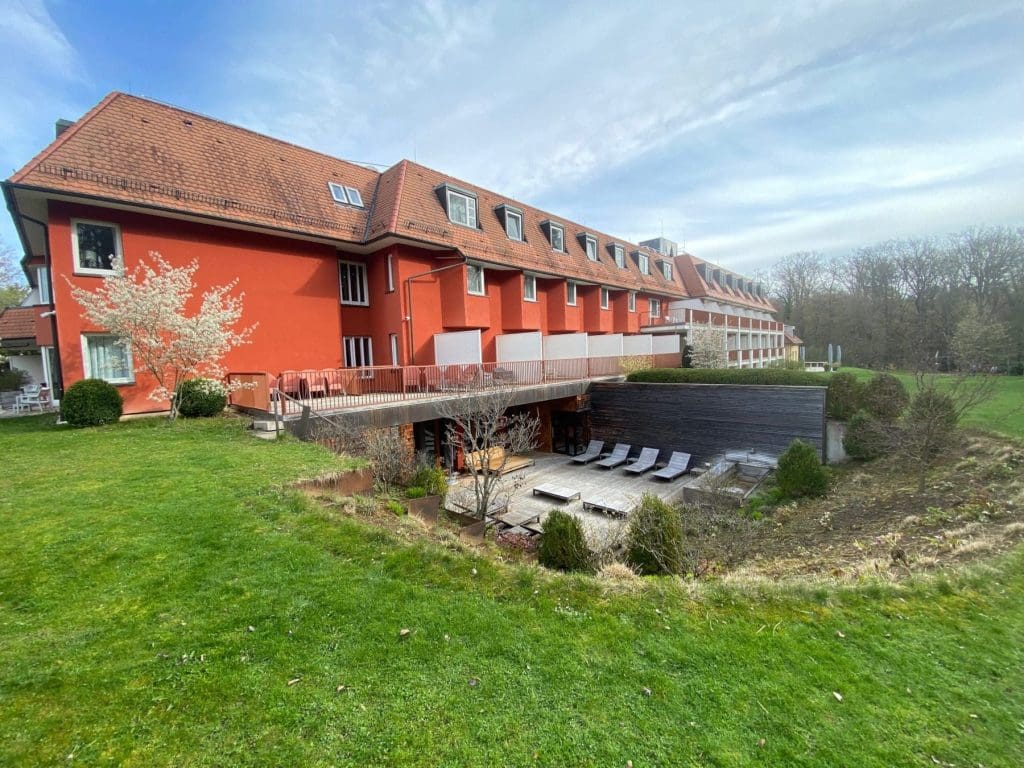
Waldhotel Stuttgart is a wonderful hotel set in a very leafy part of town – there is wood to its rear. A short walk from the nearest station, it is really easy to access the heart of the city, while allowing you to enjoy nature while you sleep. Highly recommended.
Things To Do in Stuttgart
For further inspiration on what to do in Stuttgart, visit the official tourism website.
